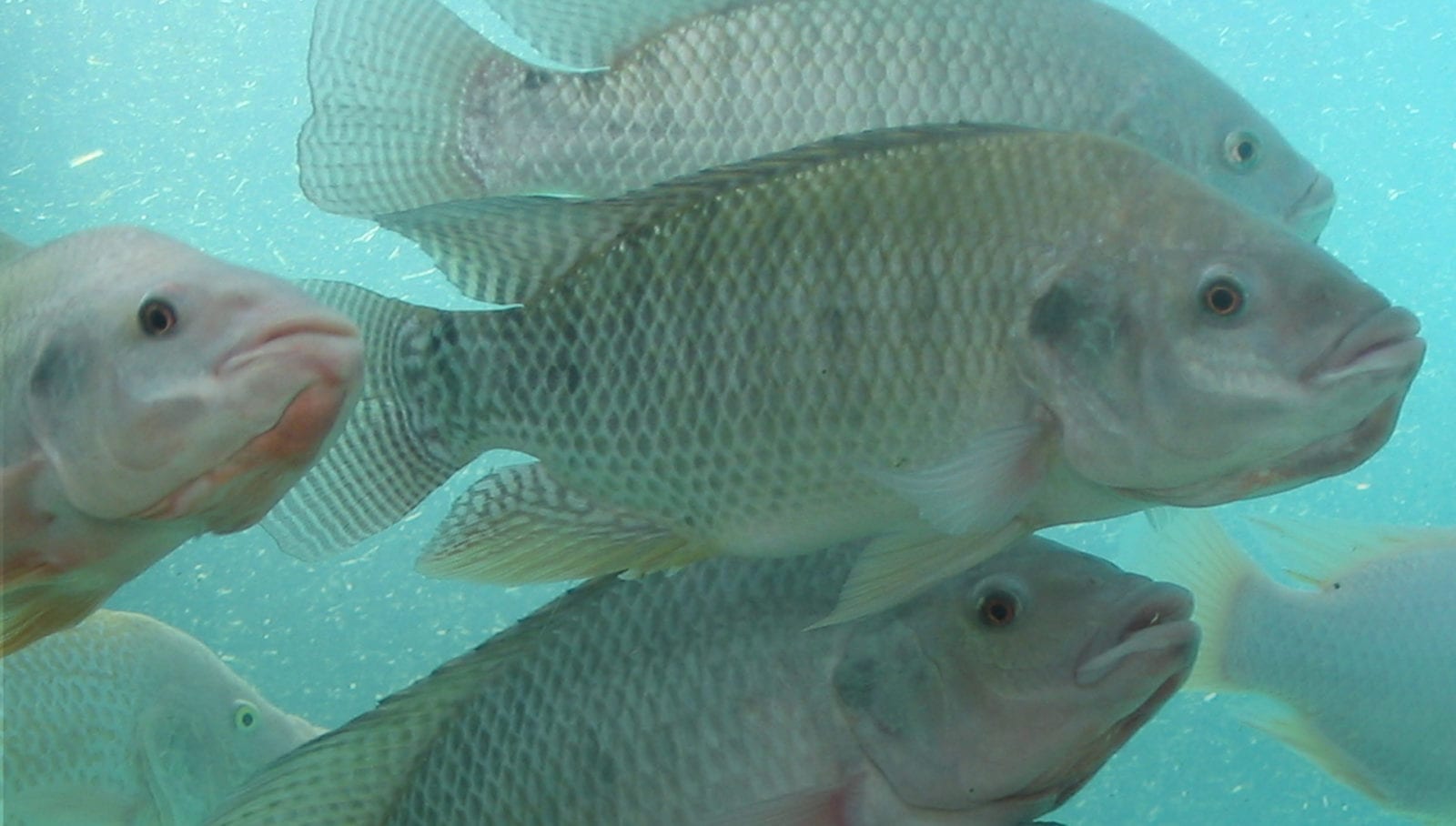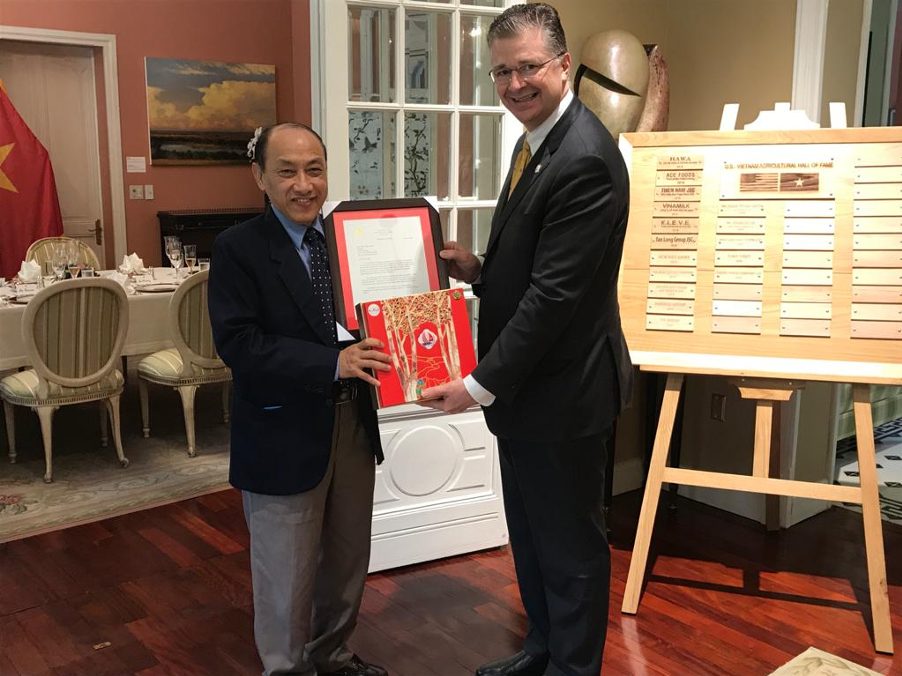Aquaculture Continues to Move Forward in Southeast Asia
- Category:
- Aquaculture
- General News

USSEC learned that a respected expert in Thailand was publicly stating that high levels of soy inclusion in shrimp feeds was the cause of White Feces Syndrome, which was not the experience of industry in other areas or indicated in studies of high soy inclusion done by the U.S. soy industry. Because USSEC works very closely with the aquaculture industry in Southeast Asia, it is important to address any misperception that soy is a cause of disease or negative performance. All indicators are that White Feces Disease is caused by a pathogen, not soy.
USSEC teamed up with local partners Kasetsart University, TFR Feedmill, and DSM to address feedmills’ concerns, scheduling a visit to Kasetsart University’s research facilities in Bangkok on August 27 for TFR and DSM’s researchers and nutritionists to inspect the progress of the soy-in-shrimp trial that USSEC is conducting with local partners to push back against this negative soy messaging. Prior research demonstrates there should not be any issue at these levels of soy inclusion in shrimp feeds, and USSEC provided this confirmation to local feedmills for their own knowledge and to inform their customers as well.
“We know that soy can be safely used at high inclusion rates, particularly with Pacific white shrimp and expect to confirm that again in this local market,” says USSEC Senior Technical Consultant, Aquaculture – Southeast Asia and Thailand Lukas Manomaitis. “More competitive [aquaculture] markets and producers will seek ways to improve efficiency and profitability. Better quality feeds with better performance will require ingredients such as U.S. soy products,” he says.
USSEC, together with FFIC Pangasius Farm in Vietnam, conducted a feeding demonstration for pangasius advanced fingerlings in floating In-Pond Raceway Systems (IPRS) on August 27, using USSEC feed with 34% crude protein/5% fat and 28% CP/4% fat. Fish was stocked at Apr 18, 2020 and harvest on Aug 27, 2020 at the average size 93 gr/pcs. The feeding demo showed pangasius at 15-100 grams using USSEC feed-based technology have a good survival rate and rapid growth.
“This technology can bring fast growth, high survival rate, saving labor costs as well [as not needing] water exchange – contributing to protecting [our] water resources” said Pham Dang Khoa, FFIC technical staff.
“We plan to build more IPRS as well do more trials to find the best replicate for pangasius in IPRS here,” stated Nguyen Quang Vinh, FFIC Farm Area Director.
The new approach of high-quality feed for pangasius in young stage culture opens a new trend for the development of the pangasius industry in Vietnam, increasing stability which can help to further boost the use of U.S. soybean meal. To produce feed for the demo, the feedmill bought 33,760 kg of U.S. soybean meal and worked with USSEC experts to formulate the feed diets.
This year marks the 25th anniversary of bilateral relations between the United States and Vietnam. Ambassador Daniel J. Kritenbrink, hosted a special reception on September 22 to celebrate the 2020 class of the U.S.- Vietnam Agricultural Hall of Fame. Trần Trọng Chiển was honored as one of the five distinguished recipients of the award this year by the U.S. Department of Agriculture for their significant contributions to the agricultural relationship between the two countries.
Mr. Chiển, as he is known, has been serving the U.S. soy industry since 1996. During this period, Vietnam has developed into a major agricultural nation and trading partner with the United States and an important destination for U.S. Soy. Mr. Chiển’s key focus has been on building preference and increasing demand for U.S. soy exports. He and his team provided trade and technical support to both local importers and end-users, as well as assistance to U.S. exporters selling soy to Vietnam. With his long tenure in the local agricultural industry, Mr. Chiển has built strong relationships with customers, suppliers, industry/association and the government sector.
USSEC congratulates Mr. Chiển on receiving the 2020 U.S.-Vietnam Agricultural Hall of Fame award for his long-standing work and efforts in building and maintaining strong partnerships between Vietnamese and U.S. businesses over the past 25 years.
